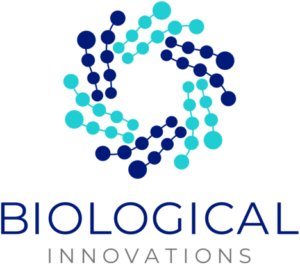
The Critical
Why PRP Results Are Inconsistent
The issue lies not in the science itself, but in the substantial platelet loss that occurs during processing. Most PRP systems lose 20-60% of available platelets, leaving patients with subtherapeutic doses and unpredictable results.
COMPETITOR RECOVERY RATES:
RESEARCH SHOWS: OPTIMAL DOSING REQUIRES
- 4-10 billion platelets per treatment for superior clinical responses;
- ≥1 million platelets/μL (roughly 5× normal concentration);
- Marx's threshold: Below this, PRP may be underdosed;
- Key insight: Total platelet dose matters more than concentration alone.
The PCX
≥89%
PLATELET RECOVERY
Higher than any system tested in independent studies.
REVOLUTIONARY TWO-STEP PROCESS
STEP 1: GEL SEPARATION
Single centrifugation removes RBCs and leukocytes while preserving platelets.
STEP 2: PROSMART 2 ULTRAFILTRATION
15 kDa cutoff concentrates platelets and growth factors without additional
MINIMAL BLOOD VOLUME
Only 24 mL required vs. 30-120 mL for competitors.
SINGLE-SPIN SIMPLICITY
Under 10 minutes processing time with reduced user error.
CONSISTENT PERFORMANCE
Standardized recovery eliminates variability.
PCX System
Transform Your PRP Practice Every Platelet Counts - Nearly Every Platelet Recovered
10
MIN
Processing Time
5.5-6x
FINAL CONCENTRATION
≥89%
RECOVERY RATE
24ML
BLOOD VOLUME
PCX represents the evolution of PRP technology, combining proven science with innovative engineering to deliver consistently superior clinical outcomes across orthopedics, aesthetics, and wound care applications.
System
Key Findings from Independent Studies:
- BSR Cambridge Study (2015): PCX exceeds even EmCyte's 81% recovery with ≥89% while requiring only 24 mL vs. 60 mL blood draw;
- Multi-System PMC Study (2017): Single-spin systems showed lower platelet concentrations and higher neutrophil contamination;
- Australian Comparative Study (2017): Substantial variations highlighted need for standardization that PCX addresses.
Clinical
4-10 Billion Platelets Per Treatment
Essential for superior clinical responses across all applications.
ORTHOPEDIC APPLICATIONS
Multiple RCTs demonstrate that high-dose PRP (≥10 billion platelets per injection) provides superior pain relief and functional improvement in knee osteoarthritis compared to hyaluronic acid and placebo treatments.
AESTHETIC MEDICINE
A 2020 meta-analysis of 13 RCTs showed PRP significantly increased hair density in androgenic alopecia, with effects correlated to growth factor concentration. High-concentration PRP demonstrates superior results in facial rejuvenation.
WOUND HEALING
A 2022 systematic review of 29 RCTs found that PRP increased chronic wound closure rates five-fold compared to standard care (OR = 5.32), with outcomes linked to platelet dose and growth factor content.
Beyond Concentration: Total Recovery Matters
A 6× concentration with only 40% recovery delivers fewer platelets than PCX's 5.5× concentration with 89% recovery. PCX delivers both efficient concentration AND near-total recovery.
TOTAL PLATELETS DELIVERED BEYOND CONCENTRATION
Traditional PRP (6×, 40%)
METHOD
PCX System (5.5×, 89%)
SOURCES
- Castillo TN et al. Comparison of growth factor and platelet concentration from commercial PRP separation systems. Am J Sports Med. 2011;39(2):266–271. pubmed.ncbi.nlm.nih.gov
- Marx RE. The classic definition of PRP is 1 million platelets/μL. PRP Clinic. 2025. prpclinic.ca
- Oudelaar BW et al. Concentrations of blood components in commercial PRP separation systems: asystematic review. Am J Sports Med. 2019;47(2):479–487. pubmed.ncbi.nlm.nih.gov
- “The all important platelet recovery percentage … was 49 %.” Texas Orthobiologics bench test (ACPMax kit). 2025. linkedin.com
- PRP Kit Comparison: Angel PRP vs EmCyte Pure PRP. PRP Labs. 2018. prplabs.com
- Evidence suggests optimal outcomes when platelet doses exceed 3.5 billion/injection withcumulative 10–12 billion across treatments. PMC 2006. pmc.ncbi.nlm.nih.gov
